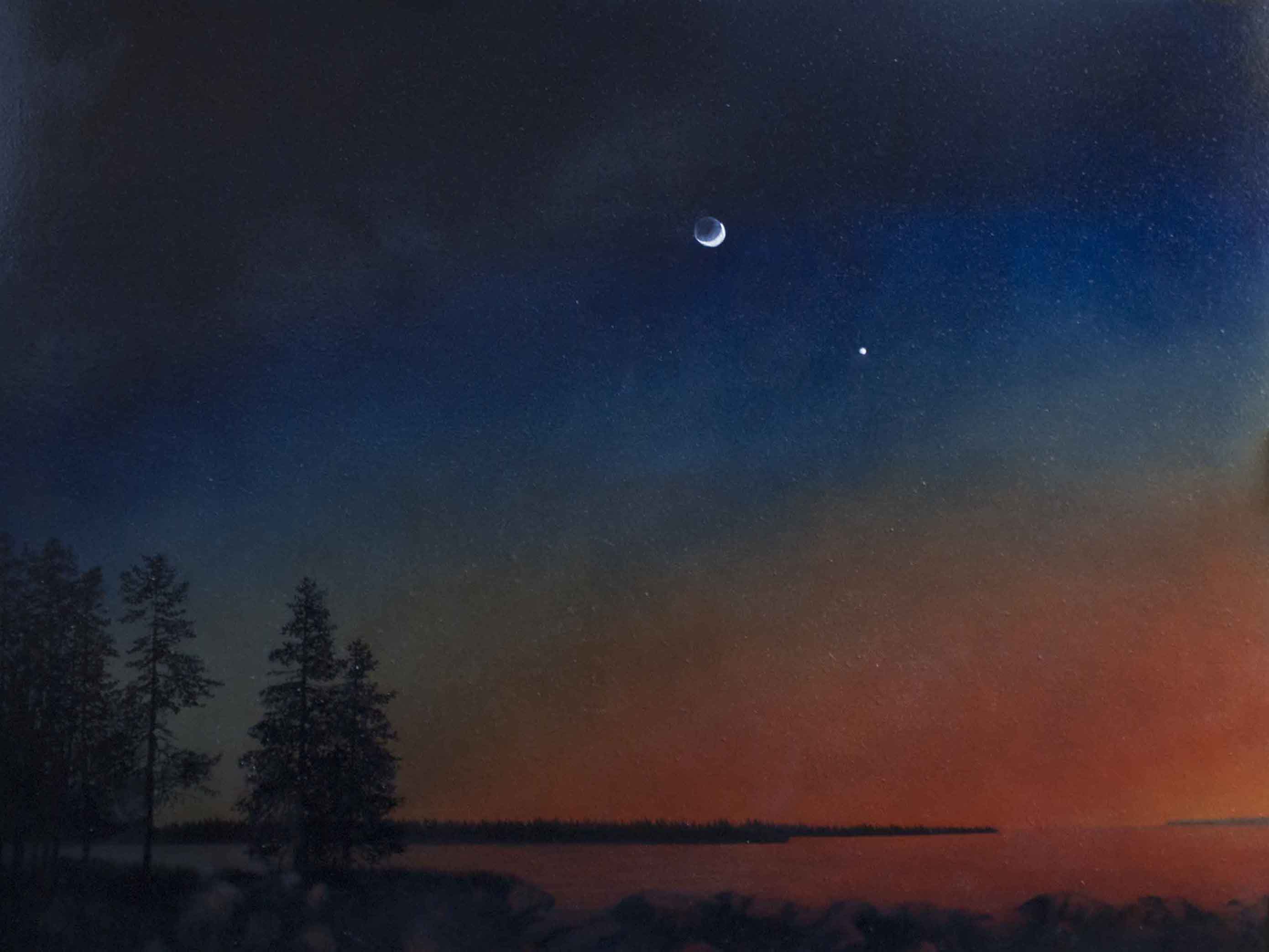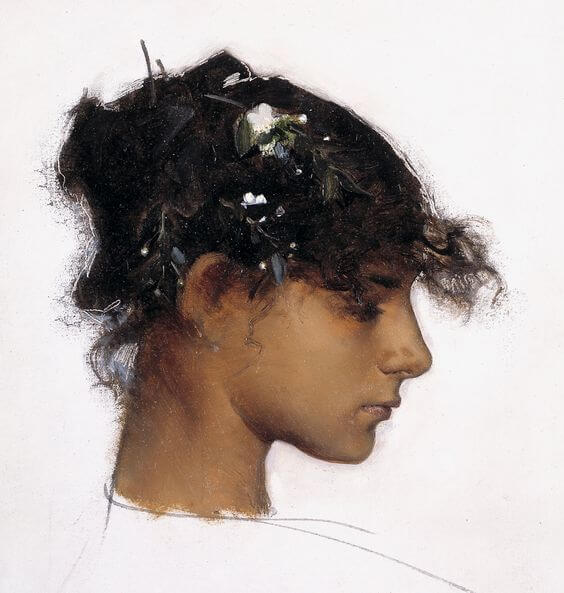My problem and I were not alone
By Al R. Young
 |
| Hano Andarion Maria (A Very Ancient Song) by Al R. Young |
This handmade, original oil painting was created by the artist in the studios at Ben Haven.
It is part of The Isles of Rune Project, an ongoing creative endeavor of the Artists of Al Young Studios.
Read more . . .
It is part of The Isles of Rune Project, an ongoing creative endeavor of the Artists of Al Young Studios.
Read more . . .
milestones
Composition finalized — 2017 February
Brushwork begins — 2017 February
Painting completed — 2017 September
Based on regular entries in the project journal for this painting, creation of the artwork involved approximately 22 sessions (from composition and panel preparation to completion of brushwork).
equipment created or modified for this project
None.
dimensions (unframed width x height)
46 7/8 in. x 35 5/8 in.
support
Panel
costumes, miniatures, and props created for this project
None.
methodology
This section presents only one or two items that may be of interest to professional artists, amateurs, and others interested in the work of the Studios.
At our house, sunsets are something of an event, and on evenings when clouds and sun and mountains coalesce for a particularly fine spectacle, we call out to each other to share in the enjoyment. It's a carry-over from childhood and, frankly,. I think much of the enjoyment amounts to taking a moment at the end of the day to be a child again. And while I take especial delight in the atmospherics of an arid, alpine desert setting over which summer thunderheads as massive as mountains themselves are drenched in every warm hue in the spectrum, I also find a particular medley of tranquility in the soft infinity of filmy colors flowing back and forth between turquoise and orange on the margin of the sunset where the hand of day slips free of the pensive blues of the coming night. Nor can I count the times I have watched the magical tryst of the moon and the evening star suspended alone above the twilight. So, when the desire to paint something that might convey the mood of the Isles of Rune , I chose as subject that supremely magical moment of sunset in a cloudless twilight where color is a watercolor wash across the threshold of dreams.
Producing the graded, spectral background of the fading sunset across such a large area turned out to be much more challenging than I had imagined. I believe, however, that making the painting as large as I did created problems with the gradient that only showed up because of the size or scale of the artwork. Nevertheless, the really knotty, technical problems I dealt with had to do with my use of Walnut Alkyd medium, manufactured by M. Graham & Co. I have used that medium for many years and I am accustomed to the fact that it sometimes refuses to bond with previously applied layers, particularly when I have used it as a clear glaze. Now, lest anything negative concerning the product, its manufacturer, or the company's customer support be supposed, I want to emphasize that my technique, particularly in this painting, involved a use of the medium which the manufacturer never intended. I can say that definitively because I telephoned the manufacturer, and the person I initially talked to did not have an answer, but contacted Art Graham, who explained that the medium simply loses its grip on the underpainting because it is not a glazing medium. Furthermore, in terms of the amount that should be mixed with a color, I was told that I should calibrate my use of the medium by thinking of squeezing one inch of paint from a tube and then adding one drop of the medium to the paint.
My search of the Internet for help with the problem had already given me to understand that I and my problem were not alone, and that many people referred to a flavor of this problem (revitalizing the surface of paint already applied so that it looks wet instead of thirsty) as oiling out. This, however, was only part of my problem. However crazy it might be for me to use this medium for oiling-out, my craziness was apparently greater than that of other artists by orders of magnitude.
The reason my problem was greater had to do with the way I painted when I started painting many years before. It was recommended that I use Windsor Netwon's Liquin as a medium along with Windsor Newton Retouch Varnish. In doing so, I discovered that I liked numerous applications of varnish so that the paint was essentially suspended in amber because it seemed to allow light to pool on, around, and under the layers. As I continued to paint, knife-work and other factors often precluded such a practice, but, whenever possible, .I relied on clear layers to achieve the sense of suspension that more or less sprang up with my painting and twined itself through my technique. Then I switched to Walnut Alkyd, attempting to use it as I had used retouch varnish in former days. Sometimes the Walnut covered, sometimes it beaded up on areas of its own choosing, refusing to bond. And sometimes the texture and image content of an area precluded such layering. Then, one day, I discovered that if I kept returning to such an area before it dried completely, and brushed the new layer once again, the viscosity of the drying medium would eventually win out and the area would gradually accept applications. Repeated applications often meant that such areas closed up, but not always.
In my quest for a solution, I found Kurt Wehlte's discussion helpful, under the headings The Basic Elements of Painting as well as Systematic Layer Painting. Looking for alternatives, I chose not to use Gamvar, primarily because of ventilation and my health; the same reasons, incidentally, that I did not return to Liquin. I paint in the middle of our home, and it came down to either creating artwork or dismantling and attempting to reconstruct more of our lives than was reasonable. And on top of all that, there remained the questions (perhaps unanswerable) about what substances in the mixture of my technique would actually bond with what.
This painting, more than any that I have painted since switching to the Walnut, is, in terms of its surface texture, a sea of glass. And, sure enough, I eventually experienced not only bonding problems, but applications of the medium that dried with a cloudy, waxy appearance. Then I had a thought: I was dealing with a mechanical problem instead of a purely chemical problem, to borrow from a distinction to which I was introduced in schoolroom science classes (not perhaps a universally applicable distinction, but handy enough for teaching basics). After all, my do-it-yourself solution to the problem (already described) was more mechanical than chemical; that is, the medium bonded with paint and, for the most part, bonded to other layers of itself, except when the surface tension of the volume applied was too weak to hold its shape after after been brushed on. So, using a soft cloth I hand-rubbed a very small quantity of medium (about the size of a dime) over the entire panel. Between this oiling-out technique and my viscosity-solution, I was able to complete the painting as intended.
I can envision restorers and archivists squirming in their chairs; nevertheless, I have logged enough time studying originals in person to know that even if there were rules and a right way of doing things, every rule has been broken and the right way ignored at one time or another by people whose work and stature are truly great. I have also studied enough of the chemistry of the art to know that most solutions require not just reason, but reasonableness. Ultimately technical questions come down to a decision that must reconcile one's own life or health with the life of the artwork. Archival soundness, personal health, budget, and feasibility are part of every technical decision. Research always garners not only divergent but strongly held opinions, facts as well as inconclusive data, noteworthy exceptions to almost any rule, and, ultimately, the need to make a decision, stay the course, and get on with the future.
 |
| I came upon the original of this superlative artwork during a visit to a traveling exhibit at a local museum. I am a long-time fan of John Singer Sargent, and this piece held me fast by its transcendent genius, but I am also an archivist, sensitive—even inclined to be overly sensitive—toward all things archival. This artwork, however, comes readily to mind whenever I am faced with questions about archival quality because, much to my surprise and guilty delight, Sargent painted it on cardboard. Rosina Ferrara, Head of a Capri Girl (1878) by John Singer Sargent |
Tags: A Very Ancient Song, 2019, Project commentaries, Tips and techniques
Browse articles by year: 2025 . 2024 . 2023 . 2022 . 2021 . 2020 . 2019 . 2018 . 2017 . 2016 . 2015 . 2014 . 2013 . 2012 . 2011 . 2010 . 2009 . 2008 . 2007 . 2006 . 2005 . 2004 . 2003 . 2002 . 2001 . 2000 . 1999 . 1998 . 1997 . 1996
Browse articles by topic: Art lessons . BenHaven Archives . Blank art diaries . Fine art photography . Framing . Illustration . Inspiration and creativity . Isles of Rune . Limited Editions Collection . My Fathers Captivity . News . Novellas . Oil paintings and prints . Operations announcements . Orders and shipping . Overview . Portfolios . The Papers of Seymore Wainscott . Project commentaries . Recipes by Nancy Young . Recommended reading . Recommended viewing . Temple artworks . The Storybook Home Journal . Tips and techniques . Tools supplies and operations
Browse articles by topic: Art lessons . BenHaven Archives . Blank art diaries . Fine art photography . Framing . Illustration . Inspiration and creativity . Isles of Rune . Limited Editions Collection . My Fathers Captivity . News . Novellas . Oil paintings and prints . Operations announcements . Orders and shipping . Overview . Portfolios . The Papers of Seymore Wainscott . Project commentaries . Recipes by Nancy Young . Recommended reading . Recommended viewing . Temple artworks . The Storybook Home Journal . Tips and techniques . Tools supplies and operations